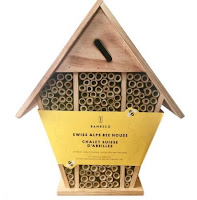Bees, Eyes, and Horses
 |
| Typical construction of mason bee house |
 |
| Courtesy Scientific American |
So why would I do that, buy homes for bees when I'm so allergic? Was it being altruistic? Was it trying to help those three species that pollinate crops (only two of those are allowed in California, one being the honeybee); was it just wanting to see a wild bee that doesn't bite or sting (but the bite of a ladybug is quite painful). Beekeeping, that is raising colonies in your backyard for honey production, has only been legal in the past few years for many cities (Los Angeles only made it legal in 2015, overturning a law that made it ILlegal in 1879); but it turns out that city bees gather pollen from many different sources and those sources vary by city. In Boston, it's the suman, linden, and apple trees; in Washington, D.C. it's cedar, clover, and Egyptian grass; and in Portland it's the sweet chestnut, rose, and begonia. Other cities such as San Francisco find them buzzing about pine and eucalyptus trees (that city has never had restrictions on raising bees). But here was one more discovery, Dunning-Kruger.
Put simply, that effect is named for a trait of what you do and don't know. One example I see is in tennis, most players scrambling to get a wide shot and missing it badly (to my eyes, Roger Federer seems to regularly take only a few steps and stop when he realizes he that the ball will be out of his reach, something few other players appear to do); that might not be the best example so here is how they tested the bees, said Popular Science: In a recent experiment led by Andrew Barron, associate professor in biological sciences at Macquarie University in Australia, researchers trained honeybees to determine which of two horizontal lines was above or below the other. Correct answers triggered a sugar-syrup reward. Mistakes drew a bitter fluid. Barron next placed the lines side by side, making a correct answer impossible. In response, many bees flew away. Shrewdly, they knew they didn’t know enough to get a treat. The mystery is how they do things like this with so little to work with, Barron says. We humans lack that ability.
So off I go for my annual eye exam, not so much for testing my vision but to watch for the possibility of glaucoma and to follow my drusens, those pesky particles that gather like cholesterol deposits on the back of your eye (if they get too close to your macula it will lead to macular degeneration). Some of my drusens are quite far away, something my doc thinks are "familial" drusens or particles I was born with; but some are patiently planted near my macular (as a rule, they don't go away; supplements such as lutein and zeaxanthin flood the market so check with your eye doc or pharmacist before jumping into the unregulated herbal/vitamin market). I was told that taking such supplements can help hold those drusens at bay and part of my yearly exam is having the back of my inner eye photographed (an inexpensive test where a laser takes a quick picture allowing you to see the health of your optic nerve, macula and any stray drusens that might be accumulating; each year's photos are stored in the computer so that they can be compared side-by-side...in my case, the drusens are staying put and not building).
There is much to discover...all around and inside us. I discovered that of our twelve cranial nerves, four are dedicated exclusively to the eyes (even those who are or become blind); later on I would find that horses have more facial muscles than dogs (yes, horses can raise their eyebrows in an expressive gesture as dogs do); and that there are 20,000 different species of bees. Admittedly, I've seen a few bee types but not those small black mason bees. With any luck I'll discover something else that is new later this year, a mud-packed home quietly housing a host of wild bees...life anew, for me and for the bees.



Comments
Post a Comment
What do YOU think? Good, bad or indifferent, this blog is happy to hear your thoughts...criticisms, corrections and suggestions always welcome.